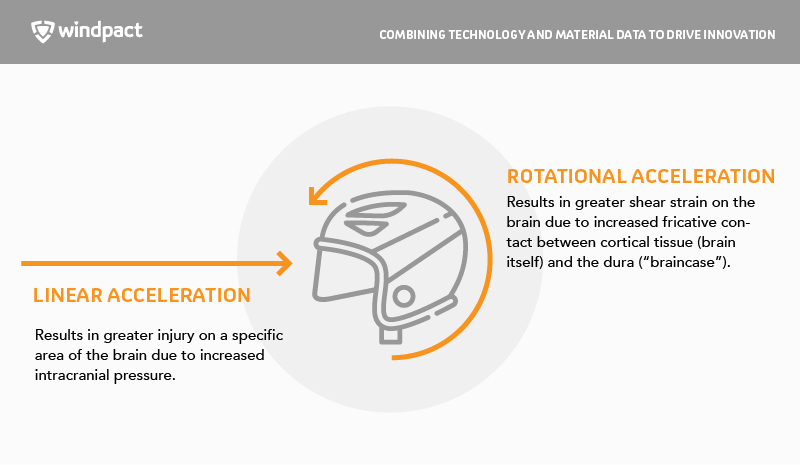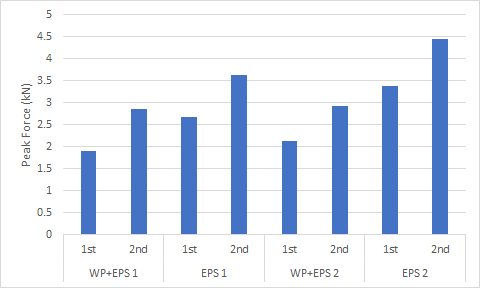Guide to Optimizing Snow Helmet Design for Safety and Style
Snow sports remain a popular recreational activity that is favored by nearly everyone fortunate enough to live within driving distance of mountaintop powder. When the winter season hits, ski resorts are packed with a mix of casual and professional athletes on skis or snowboards.
When we think of snow, we are tempted to think “soft”, and we assume the risk of injury is lowered significantly compared to other types of sports. However, this is a common misconception. Think about it this way: the fastest running back in 2017 clocked in at 22.5mph, while recreational downhill skiers can reach upwards of 40-60mph. If you’ve been following our blog series on head injuries in football players, you will know that the severity of injury is determined by a combination of factors, including sudden deceleration from high velocities. If being stopped suddenly by a defensive lineman at 22.5mph can cause traumatic brain injuries even in fully-padded football players, imagine the damage that colliding with a tree from 65mph can cause to a skier wearing only a helmet and snow gear.
In today’s post, we want to talk about the growing need for better, optimized head protection for a sport that is commonly considered safer than other sports.
We will be examining:
- Why helmets for snow sports are non-negotiable.
- How current helmets are being made.
- How to use computational solutions to optimize helmets and create safer products.
Why do we need helmets for snow sports?
Snow sports carry a significant amount of risk, depending on the type of sport you’re playing; downhill skiing and snowboarding are substantially more risky because of the forces of gravity and the high potential for collision. Head injuries remain one of the most prominent problems for winter sports athletes, constituting a 20% of all injuries sustained annually. This means that 1 in every 5 people injured during winter sports will report a head injury. Furthermore, while skiing is more popular than snowboarding, snowboarders have a 50% higher risk for head and neck injuries over skiers.
Besides the incredible speeds skiers and snowboarders can reach, helmets are also crucial for reducing the damage caused by rotational acceleration during a collision. There are generally two types of acceleration that lead to severe head injury, namely:

Snow helmets are designed to mitigate both of these forces, but there are several issues; for one, the data derived from snow sport injury is sparse compared to other sports, where databases tracking head injury are vast. However, it is clear that safer helmets will benefit everyone from casual winter sports enthusiasts to Olympic athletes, both groups facing large risks every time they engage.
How are snow helmets made, now?
Snow helmet design follows a lot of the same principles as helmets made for other sports, containing a hard outer shell and a layer of protective padding that cushions the skull. They differ in some ways though, such as having temperature-sensitve materials and ear coverage.
Shell
Snow helmet shells are made of a hard material, usually ABS or high-impact plastics that can buffer the initial impact. They are designed to disperse the energy of the impact across a greater surface area.
Padding Materials
The most popular is EPS (expanded polystyrene) which encases the head itself. It is designed to absorb energy from the impact. Some models allow for minor deformations in the foam to mitigate brain injury. As we have discussed in our other blog posts, sometimes these deformations drastically reduce the effectiveness of a helmet over time, meaning it protects you less as it gets worn down.
Part of making this material safer involves using effective foam padding in tandem with a material that accounts for repeated impacts and small amounts of deformation. This is especially true for the Crash Cloud, which can be embedded into EPS in order to improve the absorption gradient potential of existing helmets without adding stress and compression to the head.
Case Study
In a recent test, Windpact compared Crash Clouds embedded into EPS against EPS alone. The pads were impacted twice consecutively at a low-to-mid impact velocity of 2.5 m/s. The results show that the combination of the Crash Cloud and EPS outperformed EPS alone by an average of 30%.

These components are must-haves for any helmet, but in snow sports especially, where the risks of high-velocity injury are greater.
How can we make snow helmets safer in the future?
Snow helmets are practically mandatory for anyone participating in winter sports, but their effectiveness in mitigating injury needs significant improvements. Concussions and other types of brain injury such as skull fracture remain commonplace, and this has to do with the lack of materials tailored to the risks exclusive to snow sports.
The process of optimizing existing helmets already common in snow sports is a potential application of the computer-aided engineering (CAE) pipeline Windpact emphasizes in its product development. For one, finite element analysis (FEA) is an effective tool to simulate and optimize helmet performance over a near-limitless series of small iterations. Snow helmet testing can benefit from this application significantly, as CAE technologies can be used to simulate the forces involved in high-velocity skiing and snowboarding without the need for an elaborate, physical testing apparatus (though performing this testing is important in and of itself).
Computerized solutions for optimizing existing snow helmets improves performance on two fronts namely:
Safety: with the breadth of possibilities from FEA and data-driven models, manipulating small components of a model can reveal previously-unknown iterations of a helmet design that maximizes impact protection. This includes simulating different types of foam padding, arrangement, shell material and even the entire design of the helmet itself.
Style: in combination with flexible technologies like the Crash Cloud, computerized testing can effectively improve impact performance without completely changing the style or aesthetic design of the helmet itself. A common misconception is that more padding and harder materials are automatically safer, but this is misleading; harder materials give the head (and therefore, the brain) little space to move. When the head is suddenly stopped during a deceleration injury, the brain continues on its motion gradient, colliding with the skull. In helmets that strike the correct balance, this risk is reduced.
With EPS and other foam materials dominating the market, Windpact recognizes how foam padding can benefit from targeted solutions that are informed by continuous computerized testing. Without sacrificing the known benefits of foam padding, previously unfeasible solutions are made possible using this method.
Conclusion
Snow sport athletes face the incredible forces of nature each time they participate. While many injuries happen due to falling in the snow, the risk of fatal injury from colliding with trees, rocks, and other athletes remain a problem. Windpact’s optimization pipeline is designed to find areas of improvement by way of a data-informed model.
